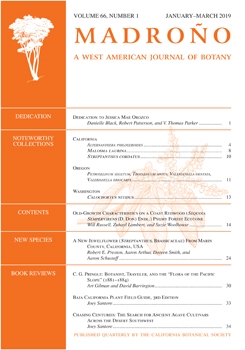Old-growth Sequoia sempervirens (D. Don) Endl. (Cupressaceae) forests are commonly assumed to be populated by massive trees, but those growing on nutrient poor soils can be stunted and display unusual growth-forms. We characterized soils, stand structure, growth form, and crown complexity using a combination of random and targeted stratified sampling across an old-growth redwood/pygmy forest ecotone. ANOVA indicated significant variation in stand structure metrics and soil characteristics [pH, cation exchange capacity (CEC), and nutrient availability] among strata, with tree height, basal area, and the relative dominance of redwood-associated species declining under the influence of pygmy forest soils; while shrub cover and the dominance of pygmy associated species increased. Pearson's coefficients indicated positive correlations between tree height and diameter with CEC, P, K, Ca, and Na. Stepwise linear regression suggested that P, K, and CEC were the strongest predictors of tree height and diameter. Growth form and crown structure of S. sempervirens also varied considerably across the ecotone, with stunted multi-stemmed individuals and clusters of small diameter trees observed where pygmy soil conditions were most extreme, and larger, but still stunted ancient redwoods with complex crown structures, resident epiphytes, and large fire hollows, existing on the edge of the pygmy forest. The ancient redwoods sampled within the old-growth/ pygmy ecotone were remarkably small in stature, yet contained many of the same structural characteristics associated with the largest and oldest S. sempervirens.
How to translate text using browser tools
5 June 2019
OLD-GROWTH CHARACTERISTICS ON A COAST REDWOOD (SEQUOIA SEMPERVIRENS (D. DON) ENDL.) PYGMY FOREST ECOTONE
Will Russell,
Zuhayl Lambert,
Suzie Woolhouse
ACCESS THE FULL ARTICLE

Madroño
Vol. 66 • No. 1
January-March 2019
Vol. 66 • No. 1
January-March 2019
cation exchange capacity
crown structure
epiphyte
phosphorus
podsols
potassium




